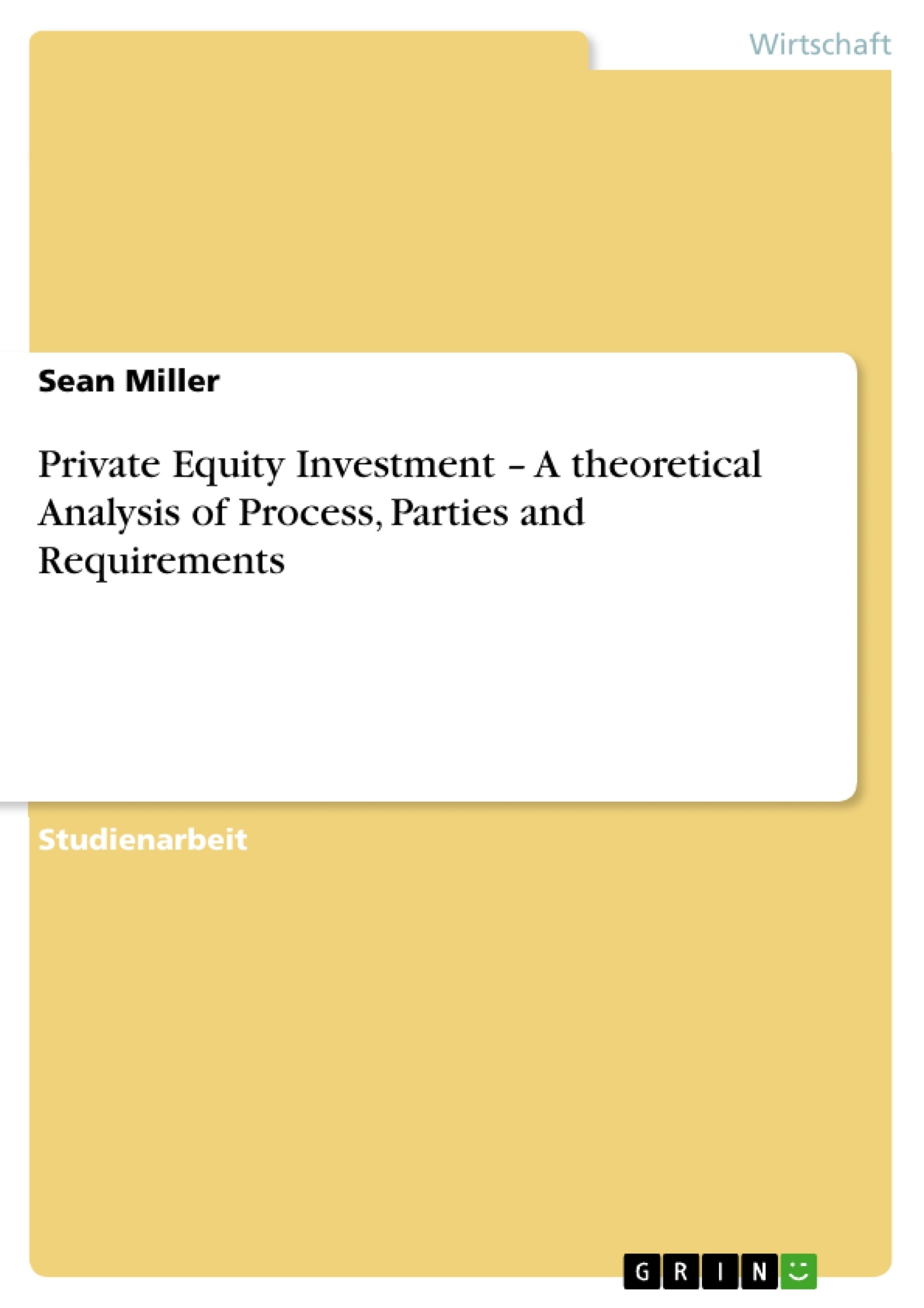The majority of companies are in need of investment capital to pursue their growth strategies. Also, a large number of companies only display a low equity ratio and as a result possess bad credit worthiness. In this regard, Private Equity represents a good alternative solution providing investment capital. It allows companies to make investments to solidify or improve their position among the competitors on the market. In times where banks and credit institutions exercise restraints, the interest of companies in Private Equity even increases. Nevertheless, particularly in Germany the growing importance of Private Equity is accompanied by great controversy. One group argues that often the Private Equity investors in their function as majority shareholders neglect the sustainable development of their portfolio companies in favor of their temporary value increase. On the other hand numerous studies indicate that companies benefit from Private Equity investments. According to these studies, companies, which have entered cooperation with Private Equity investors, comparatively, display stronger revenue growth and productivity and also generate more jobs.1 In this respect, the quality of the partnership between the portfolio company and the Private Equity investment association is a decisive success factor and must not be underestimated. Private Equity deals only generate win-win-situations if both parties are professionally engaged. Lack of preparation can either lead to a one-sided relationship – leaving one party at a disadvantage –, or even to a bad overall business, in which both sides incur losses.
This paper takes the perspective of each party and points out which specific aspects they have to consider in order having good chances of benefiting from a Private Equity deal. This leads to the analysis of several critical stages within the investment process: investment stages in general, transaction process, due diligence, business valuation and exit. Prior the meaning, history and significance of Private Equity are described.
Inhaltsverzeichnis
- I. EXECUTIVE SUMMARY
- II. LIST OF FIGURES
- III. LIST OF ABBREVIATIONS ☐
- IV
- V. BIBLIOGRAPHY
- VI. ITM CHECKLIST (360-DEGREE ANALYSIS)
- 1. INTRODUCTION
- 2. PRIVATE EQUITY IN GERMANY - BASICS
- 2.1 DEFINITION OF PRIVATE EQUITY
- 2.2 HISTORY OF PRIVATE EQUITY
- 2.3 BENEFIT OF INVESTMENTS FOR PRIVATE EQUITY COMPANIES
- 2.4 ECONOMIC IMPACT OF PRIVATE EQUITY
- 3. PRIVATE EQUITY INVESTMENT
- 3.1 PRIVATE EQUITY INVESTMENT FROM A COMPANY'S VIEW
- 3.2 PRIVATE EQUITY INVESTMENT FROM AN INVESTOR'S PERSPECTIVE
- 3.3 STAGES OF PRIVATE EQUITY INVESTMENTS
- 3.4 PRIVATE EQUITY TRANSACTION PROCESS
- 3.5 DUE DILIGENCE
- 3.6 BUSINESS VALUATION
- 3.7 DIVESTMENT PHASE AND EXIT
- 4. CONCLUSION
Zielsetzung und Themenschwerpunkte
Diese Arbeit untersucht die Bedeutung von Private Equity Investments für Unternehmen und Investoren in Deutschland. Dabei wird ein umfassender Überblick über die verschiedenen Phasen des Investmentprozesses gegeben, von der Due Diligence bis zur Exit-Strategie.
- Definition und Geschichte von Private Equity in Deutschland
- Vorteile von Private Equity Investments für Unternehmen
- Die Perspektive des Unternehmens bei Private Equity Investments
- Die Perspektive des Investors bei Private Equity Investments
- Der Private Equity-Investmentprozess und seine einzelnen Phasen
Zusammenfassung der Kapitel
- Kapitel 1: Einleitung - Die Bedeutung von Private Equity Investments wird im deutschen Kontext beleuchtet, wobei die Kontroversen um den Einfluss von Private Equity Investoren auf die nachhaltige Entwicklung von Unternehmen aufgezeigt werden.
- Kapitel 2: Private Equity in Deutschland - Grundlagen - Definition und Geschichte von Private Equity in Deutschland werden erläutert. Es werden die Vorteile von Private Equity Investments für Unternehmen sowie die wirtschaftlichen Auswirkungen von Private Equity Investments hervorgehoben.
- Kapitel 3: Private Equity Investment - Die unterschiedlichen Perspektiven von Unternehmen und Investoren bei Private Equity Investments werden analysiert. Der Investmentprozess wird im Detail beschrieben, einschließlich der Phasen der Due Diligence, der Unternehmensbewertung und der Exit-Strategie.
Schlüsselwörter
Private Equity, Private Equity Investment, Due Diligence, Unternehmensbewertung, Exit-Strategie, Investmentprozess, Deutschland, Unternehmen, Investor, Nachhaltigkeit, Finanzierungsquellen, Kapitalmärkte, Wirtschaftswachstum.
- Quote paper
- Sean Miller (Author), 2011, Private Equity Investment – A theoretical Analysis of Process, Parties and Requirements, Munich, GRIN Verlag, https://www.grin.com/document/179535




